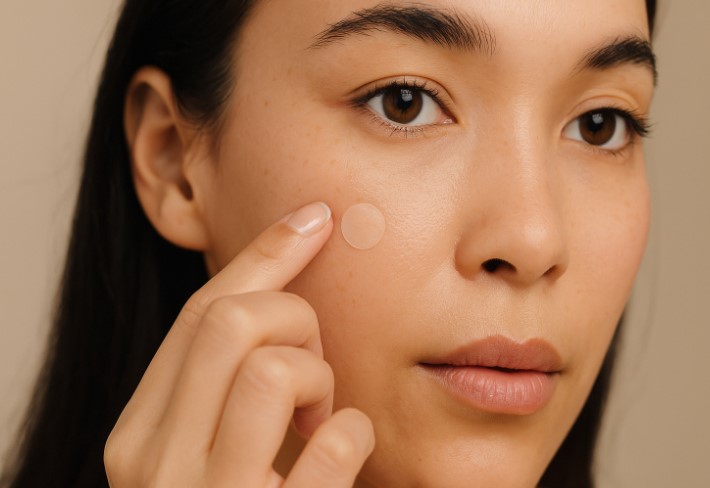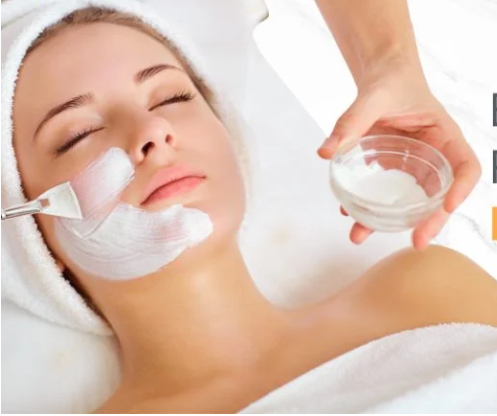In the world of skincare, only a few products have gained as much buzz as pimple patches. They’re small, discreet, and promise overnight results — a modern solution for an age-old frustration. But users often wonder, do they really work, and when should you actually use them? According to Dr. Antti Rintanen, a doctor and founder of The Internet Doctor, pimple patches can be an excellent tool for managing breakouts — but only if used correctly.
How Pimple Patches Work
Pimple patches are made from hydrocolloid, a moisture-absorbing material originally designed for wound care. When placed over a blemish, the patch absorbs fluid, oil, and pus from the pimple while creating a sealed, healing-friendly environment. The patch helps to reduce inflammation, protect the area from bacteria, and prevent touching or picking, which are among the most common causes of acne scarring.
Some of the modern versions go even further. As explained in his guide on pimple patches, newer formulations may include salicylic acid, niacinamide, or tea tree oil — ingredients that not only draw out impurities but can also reduce redness and promote faster healing.
The science behind this is sound: when the skin stays moist and protected from outside irritation, it heals more efficiently. That’s the same principle doctors often rely on when treating wounds or burns.
When They Work Best
Pimple patches are most effective on surface-level pimples, particularly those that have come to a white head or are just starting to form. These are usually whiteheads or small pustules, not deep cystic acne. By drawing out excess fluid, the patch reduces swelling and shortens the lifespan of the breakout.
They also serve a psychological purpose. Having a patch over a pimple discourages users from touching or squeezing it — both of which can introduce bacteria and exacerbate inflammation. This “hands-off” benefit is one of the main reasons dermatologists and doctors recommend them for patients who tend to pick at their skin.
Patches are also great for people who want a low-maintenance spot treatment. You can apply one before bed or even under makeup during the day. It’s a quick, clean way to handle a small breakout without disrupting your entire skincare routine.
When Not to Use Them
However, pimple patches aren’t a cure-all. Deep, painful cysts or nodules that form under the skin are too deep for hydrocolloid patches to reach. These require a different approach — often a combination of gentle cleansing, anti-inflammatory products, and in some cases, prescription treatments.
Another mistake people make is using patches on open or actively bleeding pimples. The hydrocolloid needs an intact surface to adhere properly. Applying it to broken skin can cause irritation or delay healing.
And while some people wear patches every night as a preventive step, that’s not necessary. They work best as targeted treatments, not as replacements for regular skincare or acne prevention habits.
The Bigger Picture: Why Skin Health Reflects Lifestyle
Dr. Rintanen emphasizes that acne management goes beyond topical products. “Pimple patches can help with surface healing, but lasting skin health depends on what’s happening beneath the surface, for stress, sleep, nutrition, and overall inflammation all play a role,” he notes.
In other words, if you find yourself constantly needing patches, it might be worth examining the factors behind recurring breakouts. Chronic stress can increase cortisol levels, leading to more oil production. Poor sleep or high sugar intake can also trigger inflammatory responses that affect the skin.
By taking care of your general health, you make your skin more resilient. Supporting hydration, minimizing processed foods, and maintaining good hygiene can significantly reduce the frequency and severity of acne flare-ups.
How to Use Pimple Patches Effectively
If you’re new to pimple patches, here’s a quick guide to getting the most from them — without overdoing it:
- Cleanse first. Make sure your skin is clean, dry and free of oil before applying.
- Choose the right type. Use standard hydrocolloid patches for whiteheads, and you can use medicated ones for stubborn spots.
- Apply and leave on. Ideally, wear for 6–8 hours (overnight works best).
- Don’t reuse or move it. Once a patch turns opaque, it has done its job — only replace it if needed.
Used correctly, these small stickers can help your skin heal faster, stay cleaner, and look calmer. But remember, they are tools, not cures.
Final Thoughts
Pimple patches offer a simple, evidence-based way to manage occasional breakouts. They’re especially effective when combined with consistent skincare, stress control, and a balanced diet. According to Dr. Rintanen, they’re best seen as part of a broader approach to healthy skin — one that considers both external treatment and internal balance.
They may not replace the deeper work of addressing hormonal, dietary, or stress-related triggers, but they often do what they promise: protect, heal, and remind you to let your skin recover naturally.





